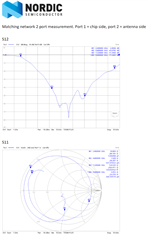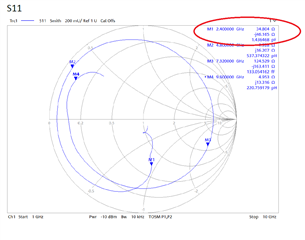We are designing a custom antenna for the nrf52833-QIAA. Could you supply the output impedance of the ANT1 antenna pin so that we can run an HFSS simulation on our layout and matching network for our custom antenna? This post
https://devzone.nordicsemi.com/f/nordic-q-a/21777/nrf52832-ant-pin-impedance#:~:text=the%20load%20impedance%20of%20the,should%20be%2053%20%2B%20j66%20Ohms.
shows the desired load impedance of the nRF52832CIAA antenna pin as 53+j66, but I haven't found numbers for the nrf52833-QIAA.
Thanks,
Isaac Davenport




